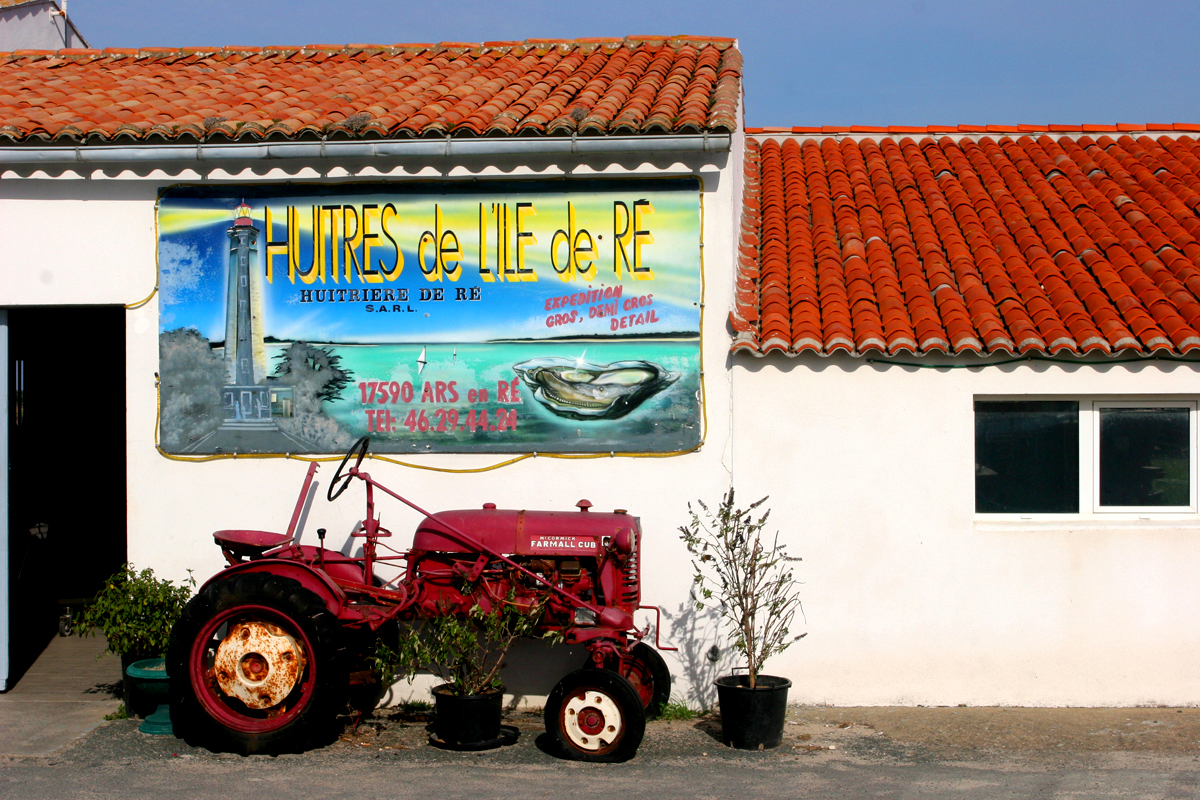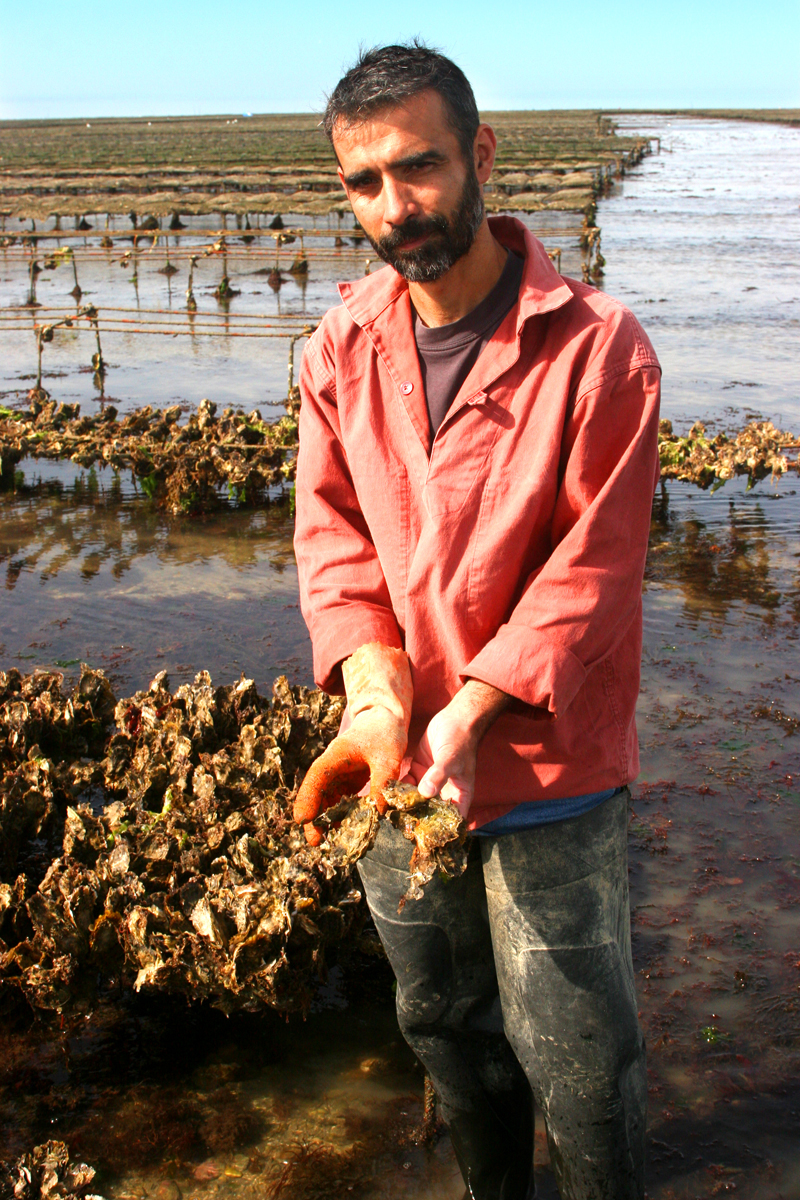This morning I was sitting out in the garden, enjoying my café au lait, when Natacha came by and slipped a piece of paper beneath the sugar bowl. It said Tony—Huîtriere de Ré. Tony, she said, was a friend of hers. An oyster farmer. She’d made a phone call for me and now I was going to get to spend the morning on an oyster farm! How great is that!
So I got on my funky little 5-speed French bike and rode down the highway for about 20 or 30 minutes, following Natacha’s instruction to look for a little building with a red tractor parked in front, which would be Tony’s huîtriere (a huîtriere being an oyster farm).
Tony, looking like a bearded Jeremy Irons, was standing in front, loading boxes on to a flatbed hooked up to a monstrous tractor with wheels 5-feet tall. His eyebrows were thick black caterpillar, his eyes puckered from the glaring sun. He shook my hand and I noticed that his hands were very raw and puffy looking. Like something that has been in salt water for far too long. I made a joke about his hand being “pickled” and he shrugged and said that’s what happens when you have been an oyster farmer for 20 years like he has.
“But I like the job,” he said. “When the weather is nice, like today, it’s very beautiful to be an oyster farmer. And when it rains or the weather is bad, it’s interesting as well. Like life, it’s never the same.”
Tony said if I was going to join him out in the oyster beds, I’d need a pair of hip waders, so he got me some and I pulled them on and then hopped on to the back of the flatbed with the oyster boxes and off we slowly went down the road to Anse du Marty, holding up the traffic behind us, until we got to the flats where tens of thousands of oysters, exposed to the low tide, clung to raised beds a foot or so above the muddy seafloor.
In our heavy rubber boots, we trudged through red seaweed and shallow pools of water a hundred yards out from the shore and while we walked, Tony told me a bit about the short, happy life of oysters; how they begin life where the ocean is rough and the water is deep so they can develop a hard, rough shell, and are moved, after a year or so, to calmer waters, like here, to fatten up. Though their eating habits are largely dependent on the weather.
“Oysters are like finicky children. If it is too hot, they don’t want to eat. If it is too cold, they won’t eat either. It’s very hard work to get an oyster to eat.”
Oysters get their taste from the sea floor. “Like wine,” he said. “It’s the sand or the rock or the clay that gives them their particular mineral taste.”
He pulled a folding knife from his pocket, pried open a mature huîtriere in his hand, and offered it to me. There was something primordial in the taste. As if this slurpy flinty gray mass in my mouth contained the DNA of all life going back to when we first climbed out of the sea.
Back at the old stone building where the oysters are sorted and stacked in crates, we sat at a picnic table and ate oyster after oyster, washed down with the island wine, just as they did a hundred years ago. After we’d gone through three dozen or so, Tony asked me if I wanted any more.
Frankly, I could have kept going, but wanting to be polite, I said, “I think I’m fine.”
He nodded and smiled. I finished off my glass of wine. He leaned back in his chair. Then he said, “Just a few more.” His wife brought out two dozen more. And we ate those as well.



Recent Comments